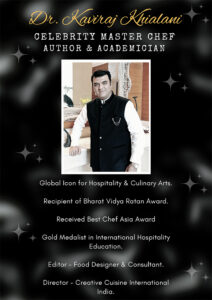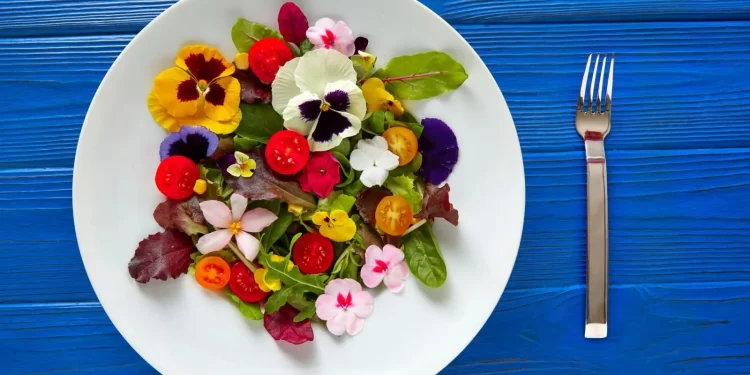- Only consume flowers that are specifically labelled as edible, and if you have allergies, consult with a healthcare professional before adding new flowers to your diet
- Using edible flowers in the presentation of foods can enhance the visual appeal of dishes, making them more vibrant and aesthetically pleasing
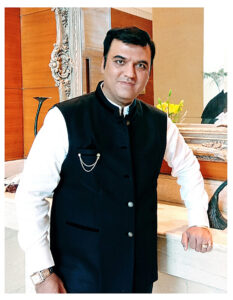
CELEBRITY MASTER CHEF DR KAVIRAJ KHIALANI
What are edible flowers?
Edible flowers are safe for human consumption and can be used in culinary applications. Examples include nasturtiums, calendula, lavender, roses, violets, chamomile, hibiscus, and elderflower. Only consume flowers labelled as edible, and ensure they are free from pesticides. Check for allergies before adding new flowers to your diet.
How and where were they invented & grown?
Edible flowers have been grown and used in various cultures globally. Specific regions or countries with rich culinary traditions often have their own varieties of edible flowers that are locally cultivated. There isn’t a single specific place of origin, as the use of edible flowers has evolved independently in different parts of the world. Today, they are grown in diverse locations to meet the demand for culinary and decorative purposes.
Types of edible flowers
There are many types of edible flowers, each with its own distinct flavours, colours, and uses. Here are some common types:
- Nasturtiums: Peppery flavour, vibrant orange and yellow colours.
- Calendula: Petals have a mild, tangy flavour and add a golden hue.
- Lavender: Fragrant flowers used in baking and beverages.
- Roses: Petals are often used in desserts, syrups, and teas.
- Violets: Both flowers and leaves are edible, with a mild, sweet flavour.
- Chamomile: Used to make a calming tea, known for its mild apple-like taste.
- Hibiscus: Tart flavour, commonly used in herbal teas.
- Elderflower: Fragrant blossoms used in syrups, cordials, and desserts.
- Pansies: Mild, slightly sweet flavour, often used in salads.
- Borage: Mild cucumber-like taste, often used in salads and drinks.
- Chrysanthemums: Mildly peppery flavour, popular in Asian cuisine.
- Dandelions: Bitter greens and flowers are edible, used in salads and teas.
- Marigolds: Citrusy and slightly spicy flavour, used for colour in dishes.
- Squash Blossoms: Delicate and mild, often used in savoury dishes.
- Johnny Jump-Ups: Sweet and slightly grassy flavour.
It’s important to note that not all flowers are edible, and some can be toxic. Only consume flowers that are specifically labelled as edible, and if you have allergies, consult with a healthcare professional before adding new flowers to your diet. Additionally, make sure the flowers are free from pesticides and other contaminants.
Nutritional Benefits Of Edible Flowers?
Edible flowers can offer some nutritional benefits, although their primary appeal is often aesthetic and culinary. The nutritional content can vary depending on the specific flower, but in general, edible flowers may provide:
- Vitamins and Minerals: Some edible flowers contain vitamins and minerals such as vitamin C, beta-carotene, and potassium.
- Antioxidants: Edible flowers may contain antioxidants, which help neutralize free radicals in the body and contribute to overall health.
- Phytochemicals: Like many plant-based foods, edible flowers may contain phytochemicals, which are compounds believed to have various health benefits.
- Fiber: Some edible flowers may contain dietary fiber, although the amount is generally small.
- Essential Oils: Certain flowers, like lavender and chamomile, contain essential oils that may have mild calming or soothing effects.
It’s important to note that while edible flowers can complement a well-rounded diet with their unique flavours and potential nutritional contributions, they are not typically consumed in large quantities. Individuals with allergies should exercise caution and consult with a healthcare professional before incorporating new flowers into their diet. Additionally, it’s crucial to ensure that the flowers are safe for consumption and have not been treated with pesticides or other chemicals.
How to use edible flowers in presentation of foods?
Using edible flowers in the presentation of foods can enhance the visual appeal of dishes, making them more vibrant and aesthetically pleasing. Here are some creative ways to incorporate edible flowers into food presentations:
Garnishes
- Simply place a few fresh, whole flowers or petals on top of dishes like salads, desserts, or soups.
- Use edible flowers to garnish plates before serving to add colour and elegance.
Floating Blooms
- Float edible flowers in beverages, such as cocktails, mocktails, or fruit-infused water.
Ice Cube:
- Freeze edible flowers in ice cubes and use them to chill drinks. This works especially well with larger flowers like pansies or rose petals.
Edible Bow:
- Create edible bowls using large, sturdy flowers like zucchini blossoms. Fill them with salads, dips, or fruit for a unique presentation.
Infused Oils and Vinegar:
- Infuse oils or vinegars with edible flowers for a delicate flavour. Use the infused liquids in dressings or drizzle them over dishes.
Candied Flowers
- Gently brush edible flowers with egg whites, sprinkle them with sugar, and let them dry. These candied flowers can be used as edible decorations on cakes, cupcakes, or desserts.
Petals in Salads
- Scatter edible flower petals in salads for a pop of colour and subtle floral notes.
Herb Blends
- Combine edible flowers with herbs to create decorative and aromatic garnish blends. This works well for savoury dishes.
Butter or Cream Cheese Spread:
- Mix finely chopped edible flowers into softened butter or cream cheese. Allow it to set, then slice for a colourful spread on bread or crackers.
Jellies and Jams
- Incorporate edible flowers into homemade jellies or jams for a visually appealing and unique touch.
When using edible flowers, it’s crucial to ensure that they are safe for consumption, free from pesticides, and labelled as edible.
Recipes using edible flower
HIBISCUS FLOWER ICED TEA
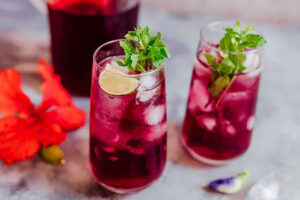
Ingredients
- 4 cups water
- 4 hibiscus flowers (dried or fresh)
- 2 tablespoons honey or sweetener of choice
- Ice cubes
- Lemon slices for garnish (optional)
Instructions
- Boil the water in a pot.
- Add the hibiscus flowers to the boiling water and let it steep for about 10 minutes.
- Remove the flowers and stir in honey until dissolved.
- Let the tea cool to room temperature and then refrigerate until chilled.
- Serve over ice with lemon slices for garnish.
ZUCCHINI BLOSSOM FRITTERS

Ingredients
- 12 zucchini blossoms
- 1 cup flour
- 1 cup sparkling water
- 1/2 teaspoon salt
- Vegetable oil for frying
Instructions
- Gently wash and pat dry the zucchini blossoms.
- In a bowl, whisk together flour, sparkling water, and salt to make a batter.
- Heat vegetable oil in a pan over medium heat.
- Dip each blossom into the batter, coating evenly, and fry until golden brown.
- Place on paper towels to drain excess oil before serving.
LAVENDER LEMONADE
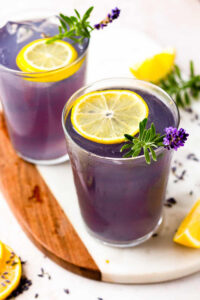
Ingredients
- 1 cup fresh lemon juice
- 1 cup honey
- 5 cups water
- 2 tablespoons dried lavender buds
- Ice cubes
- Lemon slices and fresh lavender for garnish (optional)
Instructions
- In a saucepan, combine honey and 1 cup of water. Heat over low heat until honey dissolves.
- Remove from heat and add lavender buds. Let steep for 30 minutes.
- Strain the lavender-infused honey mixture into a pitcher.
- Add fresh lemon juice and remaining water. Stir well.
- Refrigerate until chilled. Serve over ice and garnish with lemon slices and fresh lavender if desired.
ROSE PETAL JAM
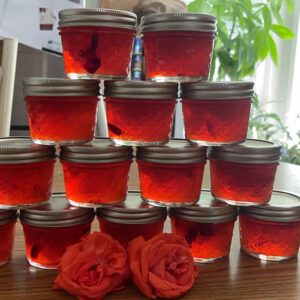
Ingredients
- 2 cups fresh rose petals (make sure they are edible and pesticide-free)
- 1 cup granulated sugar
- 1 cup water
- 1 tablespoon lemon juice
Instructions
- Rinse the rose petals gently and remove the white portion at the base.
- In a saucepan, combine sugar and water, and bring to a simmer until sugar dissolves.
- Add rose petals and simmer for about 10-15 minutes until the petals become translucent.
- Stir in lemon juice and continue to simmer for another 5 minutes.
- Remove from heat and let it cool. Transfer to sterilized jars and refrigerate.
Conclusion
Exploring edible flowers in your cooking adds visual appeal and unique flavours. Try Hibiscus Flower Iced Tea, Zucchini Blossom Fritters, Lavender Lemonade, and Rose Petal Jam for a diverse culinary experience. Ensure flowers are edible and pesticide-free. Enjoy the natural and subtle flavours these recipes offer, turning ordinary dishes into extraordinary delights.
Also Read:
